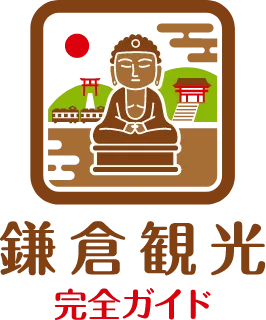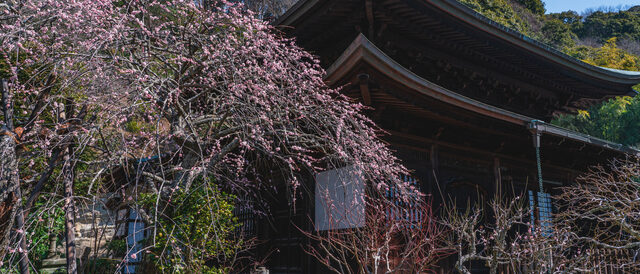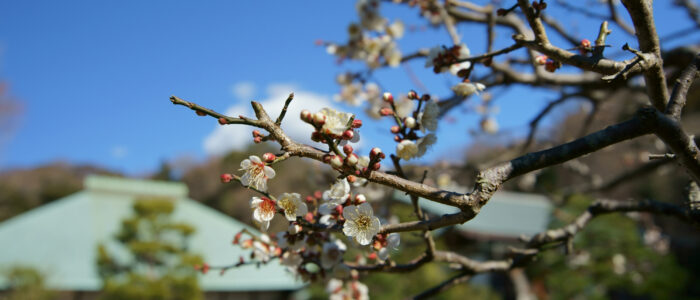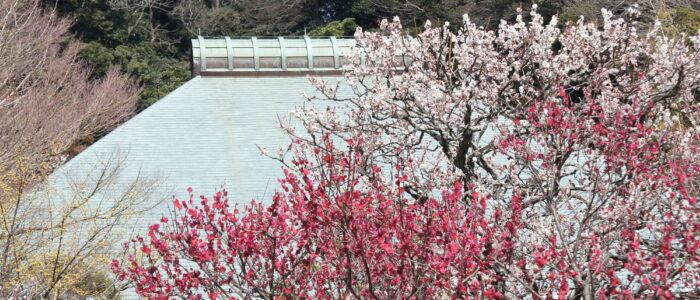Plum Blossoms at Zuisenji
The Beauty of Plum Blossoms at Zuisenji
Zuisenji is a Zen temple nestled in a tranquil valley in Kamakura, renowned for its beautiful gardens and plum blossoms. The temple grounds are adorned with red and white plum trees, as well as fragrant wintersweet (Roubai), allowing visitors to experience the gentle arrival of spring through both sight and scent.
History and Background
Zuisenji (瑞泉寺) was founded in the early 14th century by Muso Soseki, a prominent Zen master and garden designer. The temple is known as one of Kamakura’s most distinguished Zen temples, particularly for its landscape garden designed by Muso Soseki, which features seasonal flowers that bloom throughout the year. In spring, the garden is beautifully decorated with plum blossoms.
Best Season to Visit and Highlights
- Late January to Early February: Wintersweet (Roubai) blooms, heralding the arrival of early spring.
- Mid-February to Mid-March: Red and white plum blossoms reach their peak, creating the most vibrant scenery.
- Early to Mid-March: Visitors can enjoy a combination of plum blossoms, narcissus, and camellias.
The Unique Charm of Zuisenji
Beyond being a simple plum blossom viewing spot, Zuisenji’s greatest charm lies in the harmony between its gardens and architecture. The sight of the blooming plums alongside the historic main hall and temple gate enhances the tranquil beauty of the temple.
Additionally, Zuisenji is located slightly away from central Kamakura, meaning fewer tourists and a more peaceful atmosphere where visitors can fully appreciate the plum blossoms in a serene setting.
Conclusion
Zuisenji’s plum blossoms are a must-see springtime attraction, offering visitors a chance to experience history and nature in perfect harmony. Take a moment to immerse yourself in the quiet beauty of this Zen temple and enjoy the seasonal splendor of its gardens.
Toshi’s Evaluation
| Evaluation Criteria | Score | Reason |
|---|---|---|
| Scenic Beauty | 10 | The garden at Zuisen-ji, designed by Musō Soseki, harmonizes beautifully with red, white, and yellow plum blossoms, offering a serene spring experience. |
| Accessibility | 7 | It is a 10-minute walk from the nearest bus stop (Daitōnomiya), but access from Kamakura Station requires a bus ride, making it slightly inconvenient. |
| Historical Value | 10 | Founded in the 14th century as a Rinzai Zen temple, it holds significant historical value with its garden and ties to the Ashikaga clan. |
| Comfort | 9 | The quiet atmosphere and lack of crowds provide a comfortable visit, though its mountain location may pose minor facility challenges. |
| Reviews | 9 | The beauty of the plum blossoms and tranquil setting receive high praise in online reviews, including Google. |
Overall Score: 45 Points
Zuisen-ji is a top-rated destination for viewing plum blossoms, excelling in scenic beauty and historical significance. While accessibility presents some challenges, its peaceful environment is a major draw for visitors.



